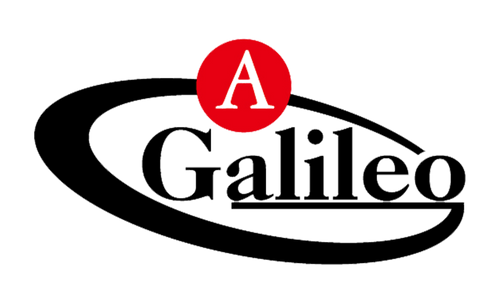Principles Of Galileo Golf Physics
By LIUXINZHI

Explaining the golf swing through physics might sound dry and complex at first. Yet, with a grasp of the swing and some personal experience, it might become intriguing. Why does a larger swing arc result in higher swing speed? Why does a bigger rotation of the shoulders during the downswing lead to longer shots? Exploring these physics concepts might deepen your understanding of the golf.

-
Double Pendulum Effect During the swing, two pendulum effects occur: the arm acting as a pendulum pivoted at the shoulders and the club forming a pendulum pivoted at the wrists. If these pendulums harmonize their movements, the second pendulum formed by the club naturally releases before striking the ball, allowing the downswing force to transfer to the ball, making the strike more natural and efficient

-
Centripetal force is the force that causes an object to move in a curved path. According to the formula for centripetal force, its magnitude is inversely proportional to the size of the curved trajectory. Applied to the swing, a larger swing trajectory requires less centripetal force to maintain the rotation, allowing for increased swing speed and greater distance.
-
.Torque is the rotational force that alters the speed of an object's rotation. In the swing, the larger shoulder rotation during the backswing and the hip rotation during the downswing manifest as torque. According to the equation Torque = Force × Lever Arm Length, a longer lever arm generates more torque. Therefore, during the backswing, the increased rotation of the shoulders amplifies the lever arm, resulting in greater swing force. Similarly, during the downswing, hip rotation generates significant torque, leading to faster swing speeds and longer shots. These concepts emphasize the benefits of elongating the body and increasing rotational amplitude to produce greater torque, consequently generating more force and speed during the swing.

Now, let's delve into the forces acting on the Galileo golf ball from impact to landing.
Forces on the Ball During Impact The interaction between the golfer and the club is crucial during the swing. As the golfer swings, transferring muscular force from the body to the club, various forces come into play. The golfer applies force to the club, and in return, the club exerts a centrifugal force in the opposite direction, naturally guiding the golfer's follow-through. Additionally, friction between the arm and the club impacts the overall force transfer, affecting the power and direction of the swing.
Forces between the Club and the Ball During the instant of contact, the club and the ball experience deformation and subsequently generate elastic forces. As the ball and the club compress and then restore, they create an elastic force. The direction of this force is opposite to the direction of the deformation. Moreover, friction occurs between the club and the ball, influencing the spin and trajectory of the ball.
Post-Impact Ball Flight Forces When the golf ball flies through the air, it experiences aerodynamic forces—specifically, drag, lift, and spin-induced forces. While spin-induced forces act perpendicular to drag and lift, their effect can be disregarded in a direct shot. Understanding the correct influence of lift and drag during flight enables a golfer to better comprehend the ball's trajectory and distance traveled.
Effects of Drag on Golf Ball Flight As air flows around a stationary object like a golf ball, the air velocity at the front decreases while it accelerates near the separation of the airstream. According to the Magnus Effect, faster airflow creates lower pressure. This creates an irregular wake behind the ball, with low pressure around the sides and high pressure at the front. The difference in pressure between the slow-moving air ahead and the turbulent wake generates the primary source of drag. Different designs of clubs and balls directly affect this drag, impacting the backspin speed and the ball's flight path. "Dimpled" golf balls, for instance, enhance friction slightly but reduce the size of the turbulent wake, significantly reducing pressure drag.

Effects of Lift on Golf Ball Flight When air flows over a rotating golf ball, the ball creates a spin-induced drag around its circumference. This effect causes the airflow on the ball's top to move faster, reducing pressure, while the airflow underneath slows, creating higher pressure. This difference generates an upward force called lift. The golf ball's rotation produces lift, giving the ball a slight "glide" through the air, extending its time in flight without expending significant energy gained from the initial strike.
Forces Acting on the Ball After Landing After landing, the ball experiences sliding and rolling friction on the ground. Initially, upon impact, the golf ball slides without rolling. The sliding friction between the ball's surface and the grass gradually decelerates the ball. As the friction increases rotation, the ball eventually begins to roll at an optimal speed, minimizing sliding friction. The magnitude of friction on the ball depends on the grass's roughness.
The forces acting on the ball, from impact to landing, are multidimensional. Understanding these intricate forces allows Galileo golfers to optimize their swings and comprehend the ball's behavior throughout its flight.
0 comments
























































